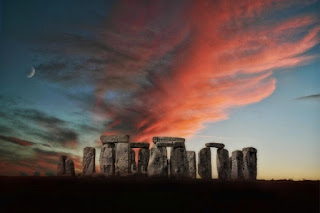Stonehenge and the Biblical Timeframe
One of the most remarkable and recognizable places in the world is Stonehenge, bringing along a sense of mystery. There are numerous candidates for the original builders and their reasons for doing so, but those are only speculations.
Why was it built? Perhaps it is because it is on one of the alleged ley lines. Some people think it may have been a temple or healing center, possibly because of the unique bluestones (spotted dolomite) that were transported from Wales to the Stonehenge site. It has been determined that it was set up to be a perpetual calendar.
 |
| Stonehenge, Pixabay / Simons41 |
After humans supposedly evolved, they sat around for thousands of years before deciding get ambitious and build cities. Mayhaps their intelligence and consciousness was also evolving. However, discoveries were made that show the ancients were far more intelligent than expected. Meanwhile, biblical creationists say that humans were intelligent from creation. When people dispersed at Babel, they brought and used their knowledge in new places. One wonders how many things that have been invented or discovered were known long ago and basically rediscovered later.
It has long been thought that Stonehenge represented an ancient calendar and was used to mark the seasons, but until recently, exactly how this was done has remained elusive. Now, Professor Timothy Darvill (of the Department of Archaeology and Anthropology, Bournemouth University, UK) has revealed Stonehenge’s solar secrets. In a 2022 research article published in the open access Antiquity Journal, Darvill outlines how Stonehenge was erected as a “perpetual calendar based on the 365.25 solar days in a mean tropical year.”
To read the rest, rock on over to "Stonehenge’s solar secrets — Inbuilt calendar reveals ancient’s knowledge of the 365.25 day year."